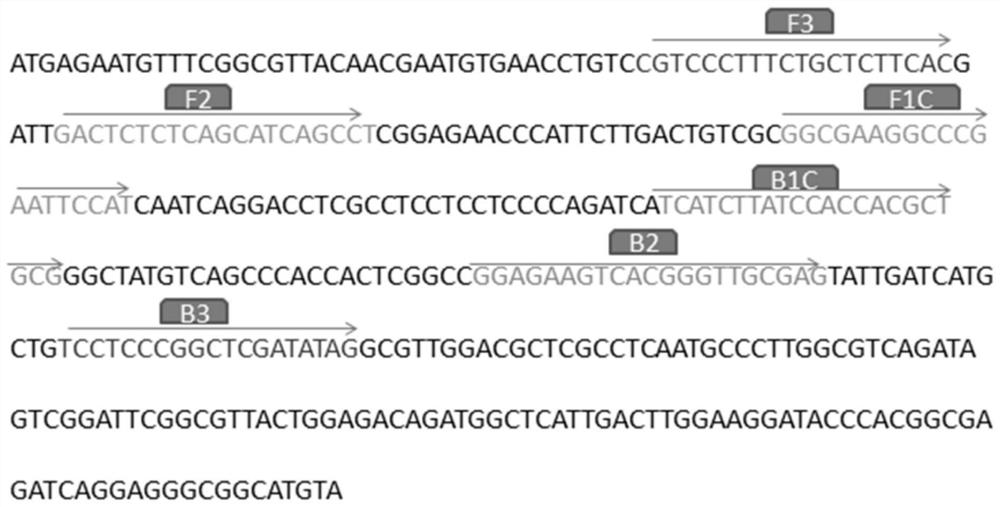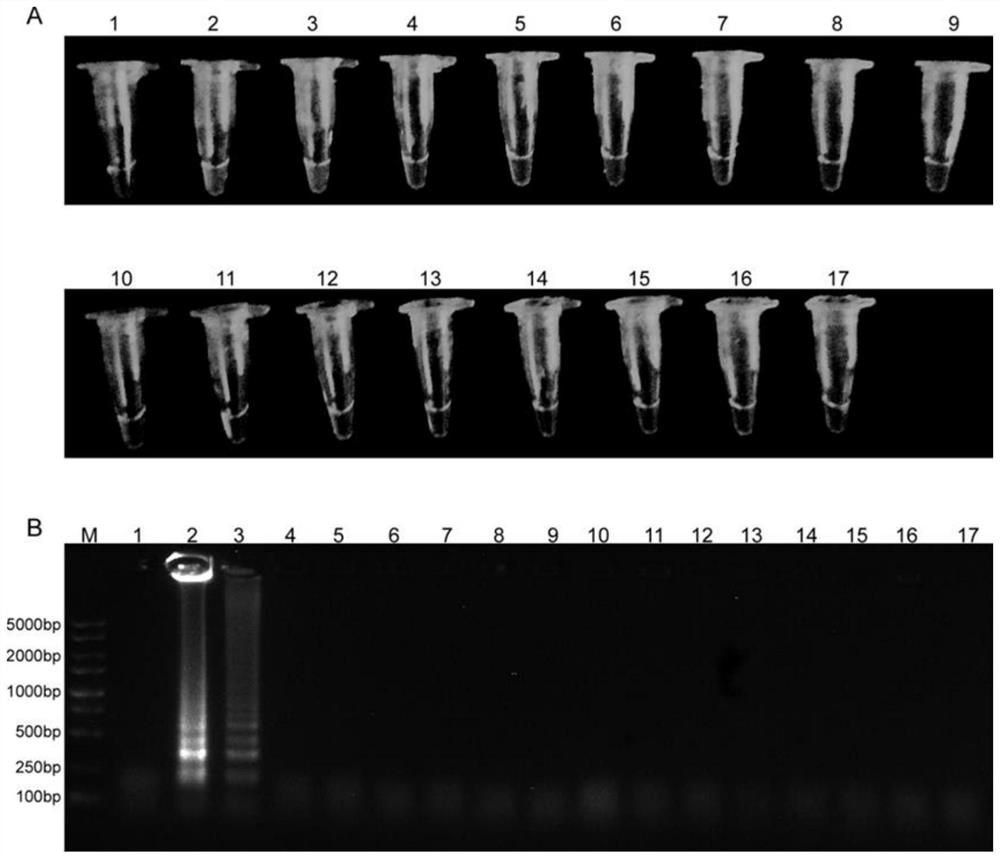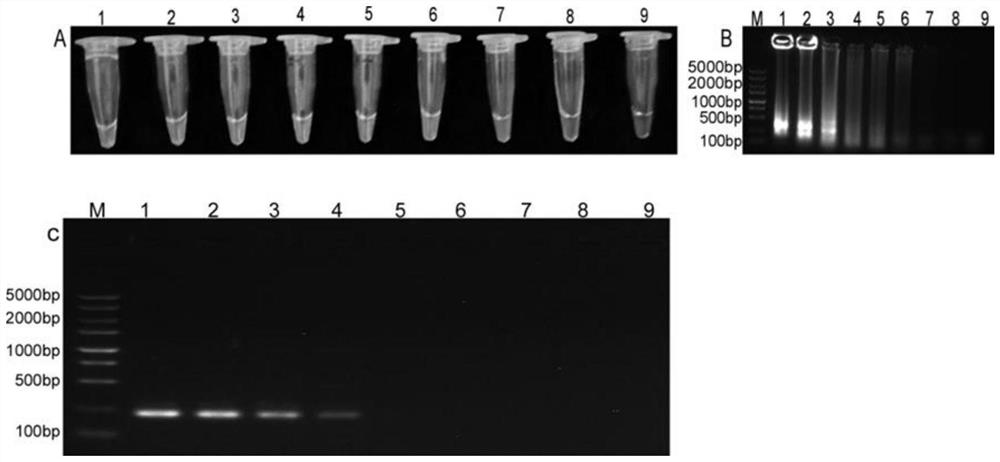LAMP primer group for rapidly detecting peach branch blight bacteria, and rapid detection method and kit thereof
The technology of a blight bacteria and a kit is applied to the detection of primer sets of peach blight bacteria and the field of rapid detection, which can solve the problems of human harm, laboratory personnel health injury, pollution and the like
- Summary
- Abstract
- Description
- Claims
- Application Information
AI Technical Summary
Problems solved by technology
Method used
Image
Examples
Embodiment 1
[0077]Example 1: A lamp ring medlar of peach bullia is aimed.
[0078]The kit is preferably comprising a BST DNA polymerase (New England Biolabs), MGSO4(New England Biolabs), 10mm DNTPS (Takara), 5mm beet base (Solarbio), BST DNA polymerase, outer primers F3 and B3, inner primers FIP and BIP, Sybrgreen I. Targeting gene fragmentfigure 1 Each primer sequence is as follows:
[0079]Positive external primer F3: cgtccctttctgctcttcac
[0080]Reverse outer primers B3: ctatatcgagccggggagga
[0081]Positive inner primer FIP: atggaattcgggccttcgggctctctcagcatcccct
[0082]Reverse inner primers BIP: TcatctTatccCCCCCTGCGCGCAACCCGTGCTTCTC
[0083]Among them, the inner primer FIP, the reverse inner primer BIP, the forward outer primer F3, the reverse outer primer B3 constitutes a LAMP detection primer composition for detecting peach bullia.
Embodiment 2
[0084]Example 2: Specificity test of LAMP reactions in Tazhiki disease.
[0085]In order to verify the specificity of the LAMP method, the test results of 16 kinds of pathogens are tested materials, and the LAMP detection shows that the peach blister strain can observe the fluorescent green positive reaction or agarose gel electrophoresis appears LAMP stepped strips, and the remaining 14 The results of similar colony species were orange negative reactions or agarose gel electrophoresis did not appear amplified strips. DNA was selected as a template, and 1 μl of DNA solution was taken as a template, and the LAMP reaction was carried out according to Example 1, and the reaction procedure was: 65 ° C, 60 min. The results show that the reaction system-based color reaction is determined as a result of determination standard. When the peach blight DNA template, fluorescent green is presented; the DNA template and negative control of different kinds of peach bark are presented orange (figure ...
Embodiment 3
[0086]Example 3: Sensitivity Test of Ta branium LAMP reactions.
[0087]In order to determine the sensitivity of the LAMP detection method, the extracted peach bile DNA was subjected to 10 times with DEPC water with DEPC water with DEPC water, and was stored as spare. The respective concentration DNA dilutions after gradient dilution were taken as a template, and the LAMP reaction was performed in Example 1, and the reaction procedure was incubated for 60 min in a water bath ° C. Take 1 μL of amplification product, electrophoresis detection is performed at 1% agarose gel. As a result, the LAMP method can detect 6.30 × 10-3μgDNA; Sybr Green I color reaction indicates that the sensitivity of the LAMP reaction also reaches 6.30 × 10-3μgimage 3 ). Each concentration DNA dilution after gradient was carried out as a template for PCR, and the result showed that the PCR detection concentration was 6.30 × 10-1μg.
PUM
 Login to View More
Login to View More Abstract
Description
Claims
Application Information
 Login to View More
Login to View More - R&D
- Intellectual Property
- Life Sciences
- Materials
- Tech Scout
- Unparalleled Data Quality
- Higher Quality Content
- 60% Fewer Hallucinations
Browse by: Latest US Patents, China's latest patents, Technical Efficacy Thesaurus, Application Domain, Technology Topic, Popular Technical Reports.
© 2025 PatSnap. All rights reserved.Legal|Privacy policy|Modern Slavery Act Transparency Statement|Sitemap|About US| Contact US: help@patsnap.com



